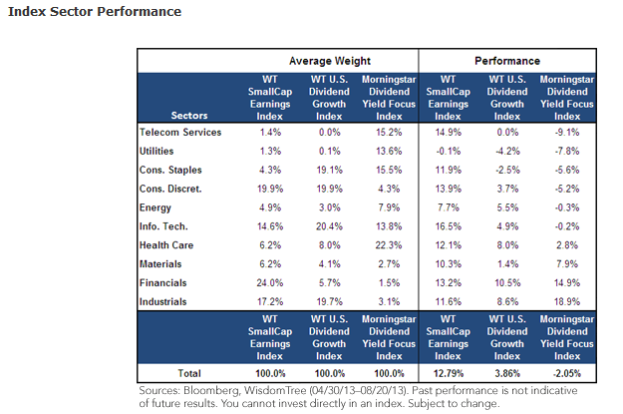WisdomTree: Russia’s Low Equity Prices Spurring Interest
Jim Rogers, a well-known investor with particular acumen for commodity and natural resource investing, said in a recent CNBC interview, “For the first time in 46 years I am buying Russia.” 1
His reasoning: Russia currently produces about 10 million barrels of oil per day out of about 90 million produced globally, and it also produces 2 billion cubic feet of natural gas daily. 2 If appetite for these resources in emerging markets remains strong, it is not difficult to see the potential for Russia’s equity markets to benefit.
Performance of Russian Stocks
For the 12-month period ended January 31, 2013, the MSCI Emerging Markets Index was up approximately 8%. Within emerging markets, many consider Brazil, Russia, India and China—the so-called “BRIC” countries—important barometers of the asset class. The MSCI China Index has been the leader of late, up about 15.7% over the period, whereas the MSCI Brazil Index has been the laggard, down about 10.4%. The MSCI Russia Index, up about 6% over the period, has been in the middle of the pack 3 .
What is currently attracting attention to Russia are the relatively modest valuations in these stocks—low single-digit price-to-earnings (P/E) ratios —unique among equities in both developed and emerging markets today.
Russia’s equities are not just inexpensive compared to other markets, they’re also inexpensive compared to their own history. The average P/E ratio of the MSCI Russia Index over last 10 years (as of January 31, 2013) is approximately 8.9x, or nearly twice current levels.
The 800-Pound Gorilla: Gazprom
Russia certainly is a country with unique risks—many in the political realm. It also has unique concentration in some of the largest firms, which tend to operate in the oil and gas resource space.
Gazprom, the largest dividend payer within Russia’s equity markets 4 , delivered an approximately -17% return and was a particularly poor performer over the 12 months ending January 31, 2013. Whether one weights Russia’s equities by cash dividends or by market capitalization, Gazprom represents a significant exposure. The firm has recently been under pressure due to earnings declines and potential dividend cuts, but if Russia’s markets rebound, it is difficult to see how Gazprom would not see a potential benefit.
The firm is a veritable monopoly within Russia’s oil and natural gas industries, and it is approximately 50% owned by the Russian government 5 .
• As of the May 31, 2012, WisdomTree Index screening, Gazprom was the second-largest dividend payer in emerging markets, with $6.34 billion. The next largest, Vale S.A., was at $2.97 billion.
• From May 31, 2011, to May 31, 2012, Gazprom grew its dividends per share by nearly 95% and saw its trailing 12-month dividend yield go from less than 2% to over 6%. It is difficult, if not impossible, to imagine it continuing this rate of growth.
• While dividend cuts are tough to see in a positive light, as of January 31, 2013, Gazprom was trading at a trailing 12-month dividend yield almost 2.5 times that of the broader MSCI Emerging Markets Index, with a P/E ratio that was less than 40% of that of the same index.
While we would agree that the price performance of Gazprom’s shares could be in for some near-term volatility, we believe that the current valuation relative to the broader emerging markets might start to point to an opportunity.
WisdomTree Emerging Markets Equity Income Index (WTEMHY): Went Over-Weight Russia for First Time since Its Inception Last Year Based on the 5/31/2012 Index Screening
Historically, the WTEMHY had very little exposure to Russia, given the fact that few Russian companies passed its strict requirements regarding the trailing 12-month dividend yield. Then, at last year’s Index screening on May 31, 2012, a number of the big Russian energy companies qualified due to their positive dividend growth and poor stock price performance. Russian equities became a 13.46% weight—a gain in weight of more than 12%. Performance thus far has been mixed for the Russian companies added at the last annual rebalance: Gazprom has been weak, but the second-biggest Russian company added, Lukoil, has been quite positive.
The WTEMHY identified a valuation opportunity in Russia, just as Jim Rogers is getting interested in Russia because of the low prices of many Russian equities.
Why a Diversified Basket
Investing in single countries involves being concentrated in risks specific to that country. This is why many people use diversified baskets such as the one represented by the WTEMHY, which tries to identify other valuation opportunities (such as the aforementioned Russia example) across multiple countries. Put simply, as of January 31, 2013, more than 86% of the Index’s weight was in constituents outside Russia—even though Russia is over-weight compared to traditional market cap-weighted indexes.
Russia: The Valuation Outlier among the BRIC Countries
Christopher Gannatti is a research analyst at WisdomTree Investments (WETF). This post was republished with permission from the WisdomTree blog.
Data sources are WisdomTree & Bloomberg unless otherwise stated.
1 Justin Menza, “Short US Government Bonds ‘Right Now’: Jim Rogers,” CNBC, 2/7/2013.
2 Roger Nusbaum, “Jim Rogers Is Buying Russia; Should You, Too?” The Street, 2/11/2013.
3 Source: Bloomberg
4 Source: Standard & Poor’s, as of WisdomTree’s most recent Global Index screening date, 5/31/2012.
5 http://www.gazprom.com/investors/stock/, as of 12/31/2011 (most recent report).

